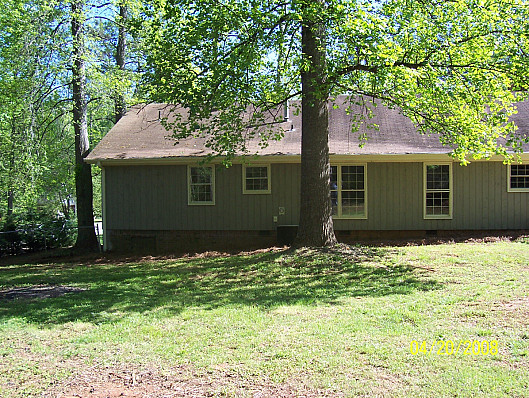Trees & Black Roof Spots

One of the most important home roof maintenance checks is to inspect regularly to make sure that trees are not growing too close to your roof and that mold or other growths are not spreading over your roof. It’s important that you are aware of the potential problems trees and mold may cause so that you can properly work to prevent these problems. Consider hiring a professional roofer to help you if you are unable to keep up with your roof maintenance.
Tree Problems
Trees are wonderful part of your landscape, but not when they can potentially damage your roof! Here are common problems caused by trees and branches near your roof, and ways to fix them.
- Leaning branches. Branches leaning on the roof can scratch and gouge roofing materials when they are blown by heavy winds. Make sure to remove branches that lean onto your roof.
- Falling branches. Falling branches from overhanging trees can damage or puncture shingles. It’s important to always keep an eye out for branches and if you see any large ones up on your roof, make sure to safely remove them.
- Falling leaves, pine cones, needles, and other debris. These can clog gutter systems, causing water to back up into the attic or into your house or to run down behind the fascia boards. Prune overhanging branches; clear out your gutters regularly or install gutter guards.
Remember: trees near your roof should always be kept neat and trimmed!
Find a local landscaper to help you maintain your trees and shrubs from getting in the way of your roof.
Mold Problems
Mold in your home is dangerous and a sign of trouble, no matter where you find it. If you see black or discolored streaks on your roof then it is a sign that you probably have mold, algae or fungus growing on the roof. Mold, algae and fungus grow faster in times of high humidity. This is especially true for asphalt shingle roofs and roofs that are in the shade for long periods of time.
The danger here is that these organisms, if left unchecked, might eat through your roofing shingles and cause the roof deck to rot. Besides the obvious threat to the structural integrity of your roof, mold and rot are hazardous to the indoor air quality.
In fact, your homeowners insurance provider may require you to remove moss or other growths from your roof.
How to Prevent Mold and Other Growths
Checking your roof every few months ensures that any mold growth does not get out of control. Pay close attention to the color of your roof, and if you notice any color changes staring to occur then you’ll know it’s time to investigate and call a local roofing contractor to take care of the problem. Usually a professional roof cleaning is the best solution here.
An excellent way to prevent mold growth is trimming back trees to reduce shade. This will also improve the air circulation around the roof. Another solution is to install zinc strips along the ridge of the roof. As the strips get wet from rain, the water rolls across them and leaves a protective coating on the roof that aids in preventing mold growth.
Updated August 22, 2018.
Looking for a Pro? Call us (866) 441-6648

Roofing Average Costs
Roofers Experiences

This Amazing Contractor Saved Me Hundreds On Roof Replacement

Yard Cleanup And Lawn Care Service With A Great Work Ethic



